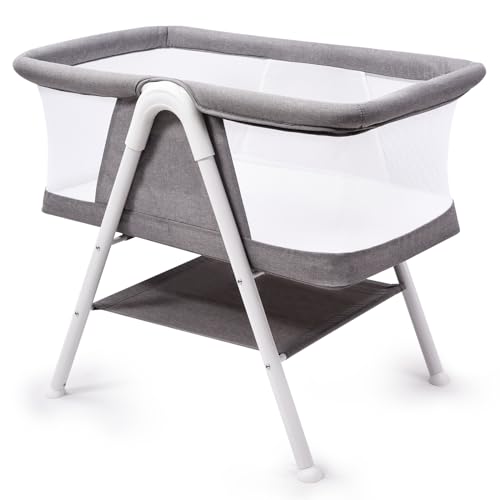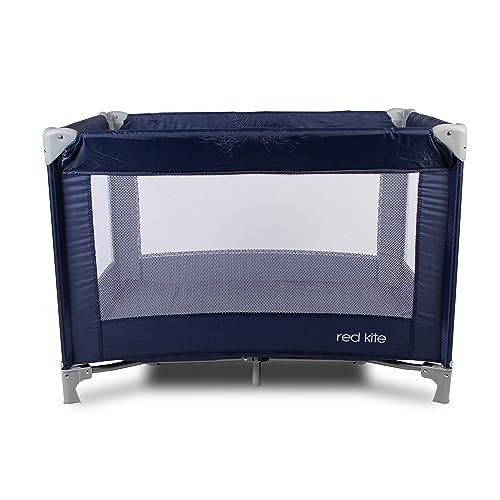
Cot for Newborns: A Comprehensive Guide
Choosing the best sleeping arrangements for a newborn is among the most substantial choices parents face. Amongst the basics for new parents is a cot, which serves as a safe, comfortable sleeping space for the baby. This post will explore the various types of cots offered, essential security considerations, pointers for choosing the ideal one, and upkeep guidelines to guarantee sturdiness and safety.
Types of Cots for Newborns
When it pertains to cots, there are numerous alternatives in the market. Each type has its distinct functions and advantages. Below is a table summing up the various kinds of cots readily available for newborns.
| Type of Cot | Description | Pros | Cons |
|---|---|---|---|
| Standard Cot | A traditional crib with repaired sides. | Sturdy and long lasting; good for long-lasting use. | Can be large; may not fit in smaller sized areas. |
| Cradle | A little, rocking cot developed for infants. | Portable and soothing for babies. | Minimal use as baby grows; less stable. |
| Moses Basket | A light-weight basket with manages. | Extremely portable; comfortable for babies. | Shorter life expectancy; typically not suitable for older babies. |
| Travel Cot | A collapsible cot suitable for travel and short-term usage. | Easy to transport; usually easy to set up. | May absence durability; not as visually pleasing. |
| Co-sleeper Cot | Connects to the moms and dads' bed, permitting proximity. | Promotes bonding; breastfeeding convenience. | Limited space; frequently more expensive. |
| Convertible Cot | Can change from a crib to a young child bed. | Adapts with Baby Crib's development; long-lasting investment. | Greater preliminary cost; assembly may be needed. |
Essential Safety Considerations
When picking a cot for a newborn, security needs to always be the main issue. Here is a list of vital security requirements and guidelines to think about.
- Standards Compliance: Ensure the cot satisfies safety standards set by regulatory bodies such as the Consumer Product Safety Commission (CPSC) in the U.S. or the European security standards.
- Slat Spacing: The distance between cot slats must not surpass 2 3/8 inches (6 cm) to prevent a baby's head from getting stuck.
- Stability: The cot needs to be sturdy and stable. Shake the cot before purchasing to ensure it does not wobble.
- Mattress Fit: The mattress must fit comfortably into the cot, without any spaces larger than two fingers in between the bed mattress and the cot sides.
- No Hazardous Materials: Check for non-toxic surfaces and materials, guaranteeing that the cot is devoid of hazardous chemicals.
- Remove Clutter: Avoid putting toys, pillows, or blankets inside the cot, as these can posture suffocation risks.
Tips for Choosing the Right Cot
Picking a cot can be a frustrating process due to the myriad of choices available. Here are some suggestions to assist improve this process:
- Consider Size: Evaluate the size of your nursery or bed room. Ensure the cot fits easily in the designated location.
- Strategy for Growth: Think about the durability of the cot. Convertible cots might provide much better worth by adjusting to a growing child.
- Spending plan Wisely: Quality cots can vary widely in rate. Set a budget and stick to it, focusing on security and performance initially.
- Research study Brands: Read reviews and perform research on different brand names. Dependable manufacturers ought to provide transparent info about their security practices.
- Convenience: Ensure that the mattress is firm and supplies adequate support. A soft bed mattress might increase the risk of SIDS (Sudden Infant Death Syndrome).
- Visual appeal Matter: While safety is vital, think about how the cot suits the overall decor plan of the nursery.
Upkeep of the Cot
Guaranteeing the safety and durability of your newborn's cot requires continuous maintenance. Here are some useful upkeep tips:

- Regular Inspections: Routinely inspect the cot for any loose screws or parts. Tighten them as required to keep sturdiness.
- Tidiness: Wipe down the cot routinely with a wet cloth and mild soap to remove dust and allergens.
- Mattress Care: Choose a water resistant cover for the bed mattress, making it easy to tidy spills or accidents. Frequently replace the mattress if it shows indications of wear and tear.
- Safe Storage: If the cot is adjustable or convertible, shop any removable parts in a safe and secure area, ensuring they are not lost and are available for future use.
- Kid's Development: Monitor your kid's growth. Transition to a young child bed when they begin climbing out of the cot to guarantee their security.
Regularly Asked Questions (FAQs)
1. What is the very best type of cot for a newborn?
The very best cot varies depending upon personal needs and area, but a Standard Cot is typically recommended for its sturdiness and long life expectancy.
2. The length of time can a newborn use a cot?
Usually, many babies shift out of a cot between 2-3 years depending upon height and weight.
3. Is a co-sleeper cot safe?
Yes, co-sleeper cots are designed to be safe, as long as they meet safety standards and are appropriately established.

4. Should I use bumpers in my cot?
It is suggested to avoid utilizing bumpers as they position a suffocation threat. Rather, make sure the cot is clear of any soft bedding.
5. Can I utilize a pre-owned cot?
If considering a pre-owned cot, guarantee it abides by the current security requirements and has actually not surpassed its life-span or been remembered.
Picking a cot for a newborn is a vital decision that needs cautious consideration of security, area, and performance. By understanding the types, safety functions, and maintenance requirements, moms and dads can with confidence choose a cot that meets their family's needs. Ultimately, the right cot will offer a safe and comfy area for your newborn to sleep, adding to their well-being and development throughout those essential early years.















